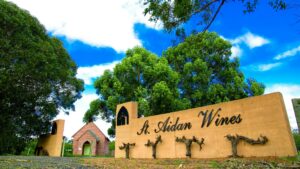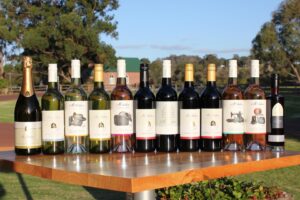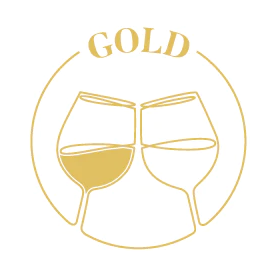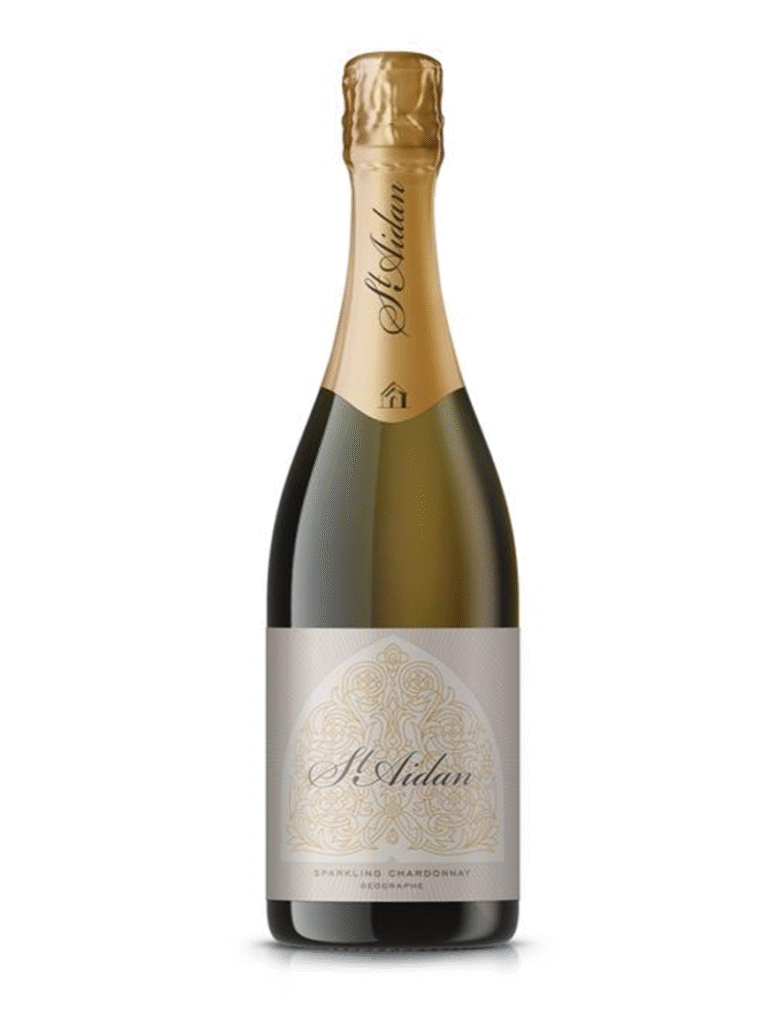St Aidan Wines
Welcome to St Aidan Wines, a boutique winery rooted in the heart of Ferguson Valley (Geographe Region, WA). For decades, it has been known for its warm hospitality, “bud to bottle” philosophy, and connection to land and community. But now, a new chapter begins — one filled with fresh energy, thoughtful stewardship, and a vision for the future.
Origins of St Aidan
The story of St Aidan Wines began in 1991, when Phil and Mary Smith purchased a 10-hectare property in Ferguson Valley. Initially home to citrus and table grapes, the land was gradually replanted with wine grapes, beginning a journey that would shape the region’s wine identity. Their first releases, a Cabernet Sauvignon 2000 and Chardonnay 2001, signalled the start of a boutique winery dedicated to crafting small-batch wines. Over time, more varieties were planted, including Sauvignon Blanc, Semillon, Merlot, Malbec, and later Tempranillo and Fiano. The name “St Aidan” was chosen in honour of the historic church that borders the property, tying the winery’s identity to local heritage.

Reputation
As the vineyard grew, so too did the opportunities to welcome visitors. A cellar door was established, followed by a café in 2009, which quickly became a gathering place for locals and travellers alike. In 2014, a dedicated functions centre was added, allowing the winery to host weddings, corporate events, concerts, and open-air cinema evenings. These facilities transformed St Aidan into a cultural hub for the Ferguson Valley, as well as a destination for fine wine. Throughout it all, the Smith family maintained a “bud to bottle” philosophy — ensuring that the same care devoted to the vines was reflected in every glass of wine poured.
Wines of St Aidan
The wines of St Aidan reflect both the unique terroir of Ferguson Valley and the creativity of the winemaking team. Signature varieties include Chardonnay, Cabernet Sauvignon, Malbec, and Tempranillo. The range also includes approachable styles like Moscato, Rosé, and fortified Muscat. Every bottle reflects the cool climate influence of the Ferguson Valley, where fertile soils and breezes from the Darling Scarp combine to produce wines of finesse.

Why St Aidan Stands Out
St Aidan is more than just a winery; it is a place where wine, landscape, and community meet. Its stunning location offers sweeping views of rolling lawns, vineyards, and the Ferguson River, making it one of the most picturesque cellar doors in WA. Visitors are drawn not only by the wines but also by the chance to experience concerts, theatre nights, and special gatherings on the property. The combination of terroir-driven wines, family-run philosophy, and cultural vibrancy sets St Aidan apart from many other producers. With the new Henty View ownership, the future promises even greater opportunities to share this special place with the world.
Learn About Western Australian Wine Regions
Encompassing the The Swan Valley, Chittering & Surrounds the key varietals grown here include Shiraz, Chardonnay, Cabernet Sauvignon, Chenin Blanc & Verdelho.
What you might not know is it is Australia’s 2nd oldest wine region and has the hottest climate of any wine region in Australia. It is actually too hot here to produce certain varietals like Pinot. So, if you find one here, the fruit will probably be from down south.
Being on the doorstep of Perth we often forget it’s only a 25 minute drive from the city. We are so lucky to have a major wine region so close to the city.
An untapped resource that we are excited to showcase. We encourage you to take a drive up through the Bickley Valley. Not only are there some great wineries, but it’s a lovely drive with some fantastic views!
Most wineries here in the Bickley region are quiet young and a little different, with some varietals somewhat uncommon in WA. It has its own microclimate, producing differences in a Cabernet or Shiraz found down on the coastal plain. Up here you will find other varietals like Durif, Tempranillo, Mourvedre, and some Pinot Noir & Merlot.
The region stretches from Jarrahdale, through Bickley and the undulating landscapes of the Darling scarp.
The first commercial vineyard began operation in 1974 by Peel estate, which is still there today and producers some wonderful wines! Shiraz is the area’s strong suite.
The sea breeze comes much sooner than the swan valley keeping the temperatures a little cooler. Unfortunately, a region with few wineries that have a cellar door at present.
The Ferguson Valley and surrounds sits about 15 mins East of Bunbury and is home to a number of small boutique wineries. It’s majestic rolling hills, and the changes between the prevailing summer easterlies to the afternoon sea breeze makes for a diverse set of microclimates.
The region also encompasses the coastal plain, and down to Donnybrook providing different styles. Shiraz, Cabernet Sauvignon & Sauvignon Blanc are the kings of this area, but wineries are experimenting with new plantings.
World renowned Cabernet Sauvignon and Chardonnay live here, but there is still diversity in the climate that creates different styles from a winery 30km North of Margaret River, to 15km’s south of Margaret River.
There are 70 wineries with a 5 star rated (James Halliday) Cabernet. Shiraz, Sauvignon Blanc & Semillon are also strong in the area. Margs wipes other Australian regions off the table when they blend a Sauvignon Blanc and a Semillon.
If you have not been a fan of Chardonnay in the past, I suggest you give it another go. Styles change, and the regions Chards is rated amongst the best in the country.
Situated to the East & West of Bridgetown the area is exposed to cooler temperatures and a higher elevation compared with Margaret River.
The Blackwood Valley mainly produces quality aromatic Chardonnay and Sauvignon Blanc. You can expect to find a vivid shiraz full of black fruits, and a textured, medium-bodied cabernet sauvignon. There are much fewer wineries in the Blackwood Valley compared with Margaret River.
The first vineyards in the region were established in 1976 and the area is now home to several award-winning wine producers and grape growers who supply some of Australia’s finest restaurants.
This is Karri Forrest country, and the rich soil is loved by Vineyards and Avocado’s galore! Its cool and wet in Pemberton for about 6 months, receiving far more rainfall than most other wine regions in WA.
The area can receive over 1.2 meters of rain per year. It is not uncommon in summer for Perth to be Sunny and 33c, while Pemberton is partly cloudy with cool ocean breezes from the South East and only 24c.
This lush soil combined with cool weather helps Merlot, Pinot Noir, Sauvignon Blanc & Chardonnay thrive here, and keep an eye out for a lovely floral Cabernet Franc as well.
Much debate has been had over splitting up the Manjimup and Pemberton regions. Manjimup has a warmer climate and less fertile soil whereas Pemberton’s soil is richer.
The Warren River runs through the middle to split up the regions. The area is reasonably young in plantings, dating back to the late 80’s. The wines produced in this area are Merlot, Cabernet Sauvignon, Chardonnay, Pinot Noir, Sauvignon Blanc and a few Cabernet Franc’s. For me, the Manjimup and Pemberton regions produce the states best Merlot. If you haven’t been a Merlot fan, it could be you are yet to try one from these regions.
The biggest single wine region in Australia – I bet you did not know that! There is such diversity in terrain, climate and soil type that just about anything thrives down here.
Denmark, Mount Barker and the Porongurup’s are the key areas, Some of WA’s finest Shiraz comes from north of Denmark in the Frankland River area, while most of Australia’s best Rieslings come from the Porongurup’s. Just ask James Halliday who says it himself!
Due to the sheer size of The Great Southern and its varied terrain, it has the capacity to produce world-class wines from a range of classic varieties. Shiraz, Cabernet Sauvignon, Pinot Noir, Riesling, Sauvignon Blanc & Chardonnay. There are 5 star wineries littered throughout the region. I need no convincing in taking a trip to Denmark for their wineries.





